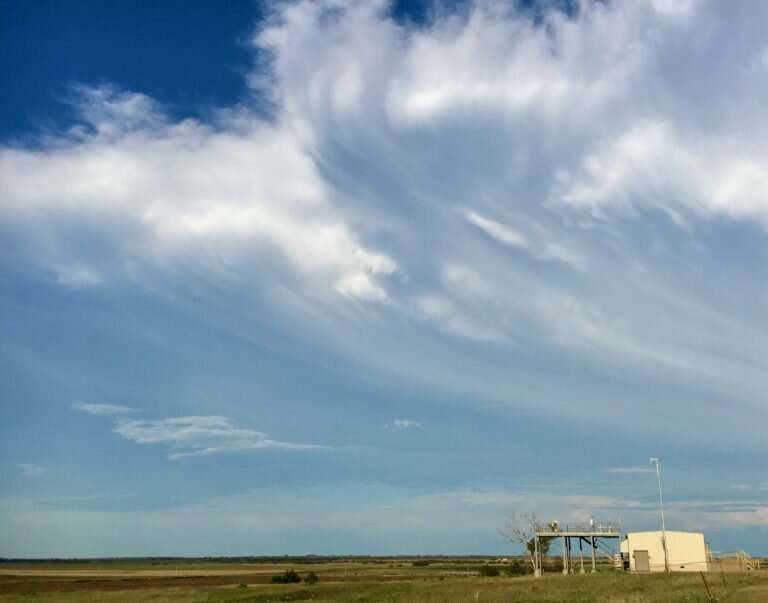Chemists find fungal shrapnel in the air

In a discovery that has implications for our understanding of the air we breathe, UCI chemists report that they've found nanoscale fragments of fungal cells in the atmosphere. The pieces are extremely small, measuring about 30 nanometers in diameter, and much more abundant than previously thought, the researchers say in a study published this week in Science Advances.
"These fragments are most likely bits of fungal spores that have burst after swelling with water," said lead author Michael Lawler, assistant project specialist in the Ultrafine Aerosol Laboratory headed by co-author James Smith, UCI professor of chemistry. "It was unexpected to identify them as fungal fragments. The appearance of large numbers of atmospheric nanoparticles is usually ascribed to reactions of gases in the atmosphere, growing up from molecules rather than breaking down from larger particles."
He said these lofted bits of fungus are easier to inhale deep into the lungs than intact cells, which can be thousands of nanometers in diameter. This means they may contribute to fungus-related allergic reactions and asthma among susceptible people.
The study also explored how these tiny crumbs of biological matter might aid in the creation of ice clouds, as some such cells have been found to facilitate ice formation in the sky.
"Large, intact biological cells are extremely rare in the atmosphere, but we've identified fungal nanoparticles in orders-of-magnitude higher concentrations, so if some or all of these are good ice nuclei, they could play a role in ice cloud formation," Lawler said.
To make these observations, the researchers drew air into an inlet that size-selected ambient particles to take in only those measuring 20 to 60 nanometers in diameter.
The samples were collected onto a thin platinum filament for 30 minutes and then vaporized; the resulting gases were detected using a high-resolution mass spectrometer.
More information: Michael J. Lawler et al. Atmospheric fungal nanoparticle bursts, Science Advances (2020). DOI: 10.1126/sciadv.aax9051
Journal information: Science Advances
Provided by University of California, Irvine





















